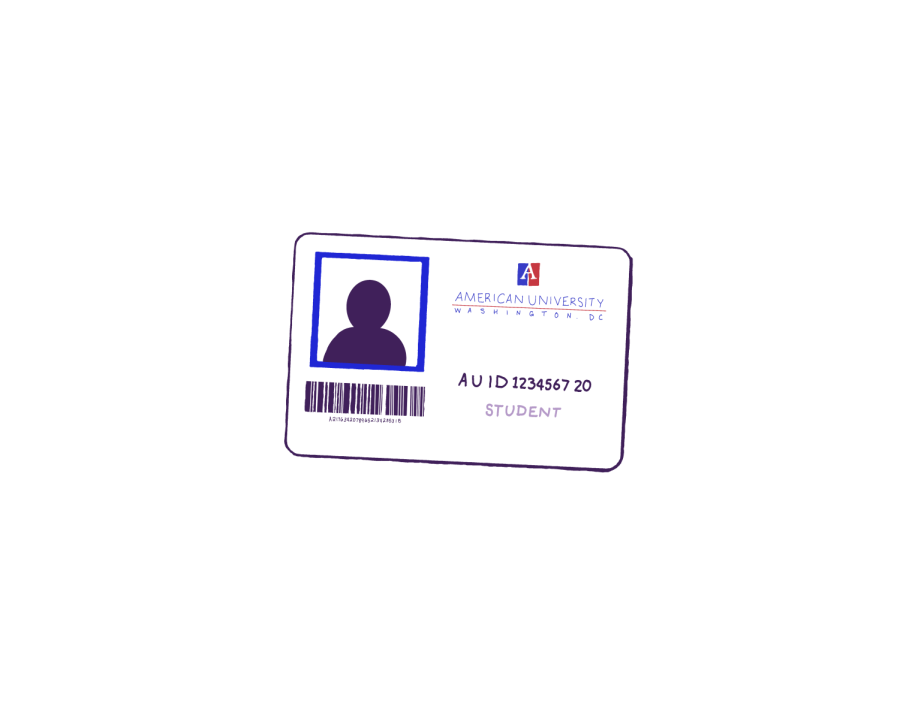Dining out on EagleBucks
While some businesses still accept EagleBucks, many have cut ties with the program.
Leigh Hanau, a junior at American University, could purchase fresh salads from Panera and stuffed burritos from Chipotle with EagleBucks last semester but now must pay in cash or credit. As of Fall 2022, neither of those restaurants accept EagleBucks, according to the university website.
University meal plans include EagleBucks, which students can use instead of cash at on-campus locations and some off-campus locations.
Last semester, 27 off-campus venues participated in the program, according to Internal Communications Manager Jasmine Pelaez. Eight of them, including Panera Bread, Whole Foods and Wawa, no longer accept EagleBucks.
“You used to be able to spend EagleBucks everywhere, and now you can’t. You can only really spend them on campus,” Hanau said. “Which gets kind of boring.”
EagleBucks had a broader use when Hanau applied to the school three years ago.
“They said you could use EagleBucks at all of these different places across Tenleytown,” Hanau said. “I really liked that. I thought that was a cool idea that I wasn’t stuck eating on campus.”
Hanau said she felt the university needed to explain to the student body why it changed the venues that accept EagleBucks and provide an official statement on what restaurants were available.
At the beginning of the Fall 2022 semester, 11 businesses accepted EagleBucks. In an email on Oct. 11, Assistant Vice President of Campus Auxiliary Services Michael Scher and Senior Director of Dining & Auxiliary Services Ann Marie Powell said eight new restaurants accept EagleBucks. According to the university website, students can now use EagleBucks at 19 off-campus venues.
Hanau said the way these restaurants changed their policy was notable.
“The fact all of these places are starting to use them less makes me think that maybe this is AU,” Hanau said.
According to Pelaez, venues left the program due to circumstances external to the university.
“The merchants leaving the program did so for a variety of reasons, including location closure, going out of business and one with very low sales in the program,” Pelaez said. “Whole Foods exited all campus programs like EagleBucks nationwide.”
Over the summer, the university transitioned the EagleBucks program to DishOut, a payment solutions company, according to Pelaez.
“Campus Cash, which operated EagleBucks throughout last year, notified us in late May that they were outsourcing technical services to DishOut,” Pelaez said.
Pelaez said the added restaurants went through a four-step process during which the establishments were contacted by DishOut and signed a contract. They then transported and tested the necessary equipment.
This transition process delayed some venues in accepting EagleBucks, Pelaez said, because of the global microchip shortage, a crucial part of the EagleBucks card readers. According to an overview published by the U.S. Department of Commerce in January, microchips became unavailable for many due to COVID-19-related demand and supply shortages.
When microchips did arrive and the transition was complete, Papa John’s, Domino’s, Surfside and five other venues accepted EagleBucks. Last year, restaurants like SeoulSpice, Z-Burger and Nando’s accepted EagleBucks, according to the One Card & Dining Services website. However, other restaurants in Tenleytown, such as Popeyes, District Taco and Guapo’s, do not accept EagleBucks this semester.
Two of the off-campus venues that accept EagleBucks are outside Tenleytown. The university added Gregorio’s at Sumner Place and Gregorio’s Concessions on Oct. 11. According to Google Maps, those locations are almost 10 minutes away by car.
Having 19 off-campus dining options means students will have 30% fewer options than in the spring 2022 semester.
Students also lack variety in their food options. For example, six out of the 19 off-campus venues serve pizza, along with three out of 12 on-campus dining locations.
According to the university website, its partnership with Grubhub allows students to sign into the app and use EagleBucks to get food delivered to their dorm. Over 320,000 restaurants nationwide use Grubhub, according to Grubhub’s website. Grubhub mitigated the delays caused by microchips during the transition process earlier in the semester, Pelaez said.
Freshman Emily Carroll said she uses EagleBucks for Grubhub regularly.
“That’s what’s so convenient about having [EagleBucks] through Grubhub,” Carroll said. “You can pay for any restaurant. They don’t necessarily have to have a deal with AU because Grubhub does.”
The One Card and Dining Services website has instructions on how to use EagleBucks through GrubHub and also portrays EagleBucks as a convenient tool.
“EagleBucks are a convenient, cashless way to make purchases, using the university-issued One Card, both on campus and at many popular off-campus businesses,” according to the One Card and Dining Services’ website.
Freshman Amaris Bianchi shops at Target and Whole Foods, two of the biggest chains in Tenleytown. Both Target and Whole Foods don’t accept EagleBucks.
“I usually just use my own money to buy stuff,” Bianchi said.
Bianchi said she chooses to save her EagleBucks for laundry on campus.
“A lot of kids I know, especially on my floor, have blown through their EagleBucks already and so some of them have had to ask their parents to transfer money into their accounts just to do laundry,” Bianchi said. “I feel like laundry either could’ve been EagleBucks or actual money.”
Like Bianchi, Ava Cowles, a junior, shops at Whole Foods even though they don’t accept EagleBucks. She said she buys groceries there and cooks meals at her Nebraska Hall dorm.
Cowles said that even if Whole Foods returned to accepting EagleBucks, she wouldn’t spend them there.
“I would run out of EagleBucks and constantly [have] to reload them,” Cowles said.
Cowles said she doesn’t need more Tenleytown venues to accept EagleBucks. She said she only uses EagleBucks when going to The Davenport Coffee Lounge, The Bridge and the Starbucks on campus.
“I think they’re definitely worth it for Starbucks, The Dav and The Bridge because they don’t take the meal plan,” Cowles said. “I think if you have a meal plan and you’re living on campus, you should use that one as much as you can, and then limit how much you’re using Starbucks and The Dav.”
Cowles said she cooks her food to avoid the hygiene issues in the Terrace Dining Room, the dining hall on campus. A September inspection found Terrace Dining Room had several health code violations.
“I thought that [175 meal swipes] was going to be too little and it ended up being way too much,” Cowles said. “I had plenty left over and you can’t donate meal swipes or turn them into EagleBucks.”
The 175-meal swipe meal plan costs $2,253. According to the One Card and Dining Services website, without the plan’s $400 in EagleBucks, the value of each meal swipe is $12.87. Lunch at TDR costs $16.49 when paying with EagleBucks.
For students like Hanau, the problem is having less access to food. In her sophomore year, Hanau lived on campus and used meal swipes and EagleBucks. As a result, EagleBucks became vital to her eating and spending habits, Hanau said. Without EagleBucks, eating would have been more challenging, she said.
“I would have been a little overwhelmed about the money and the financial [aspects of college] now that I have this new financial responsibility,” Hanau said. “It may seem like a small deal, but if you’re struggling or if you’re going through a rough spot, that can be really difficult and you literally need it to live.”
This article is from AWOL’s 31st print edition.
Caleb Ogilvie is a freshman studying journalism.
Katherine Seri Chang is a sophomore studying film & media arts

Caleb Ogilvie (he/him) is an award-winning journalist passionate about talking with people about the topics most pressing to them. His reporting allows...

Katherine Chang (she/her) is a senior at American University studying Film and Audio and a part of the multimedia department. She is currently aiming...

Casey Bacot (she/her) is a senior studying journalism. She enjoys tea, hanging out with her cat, and video games.












